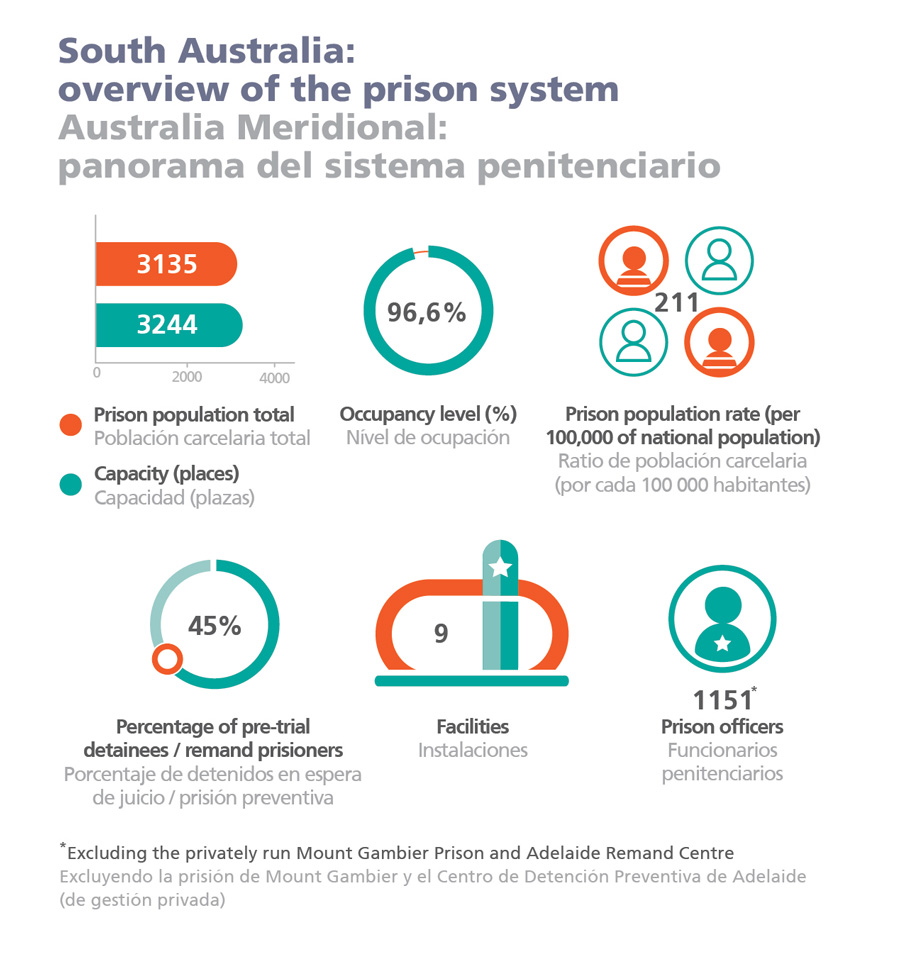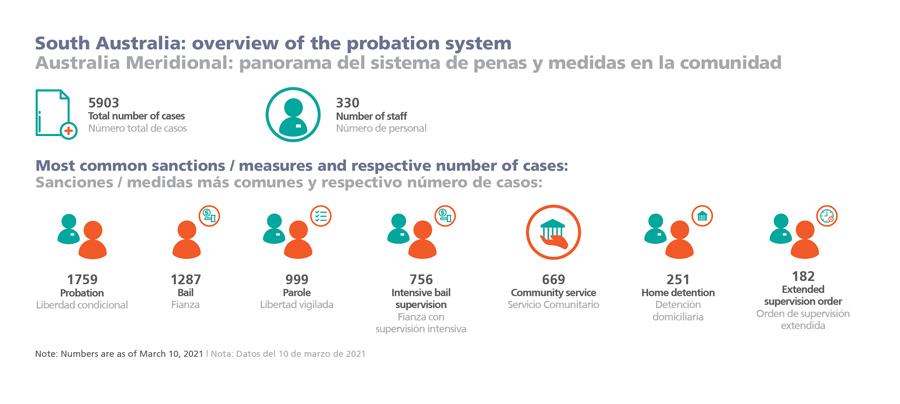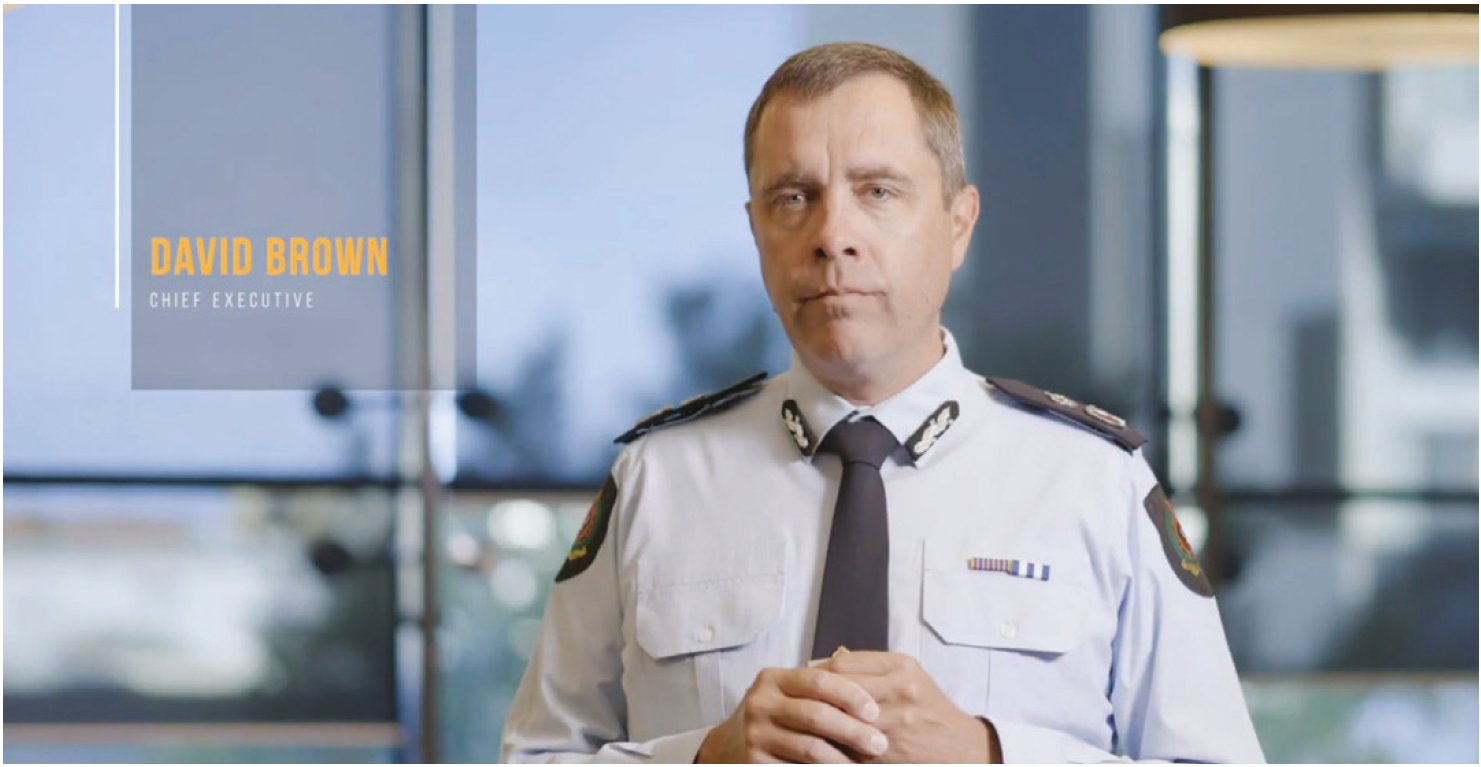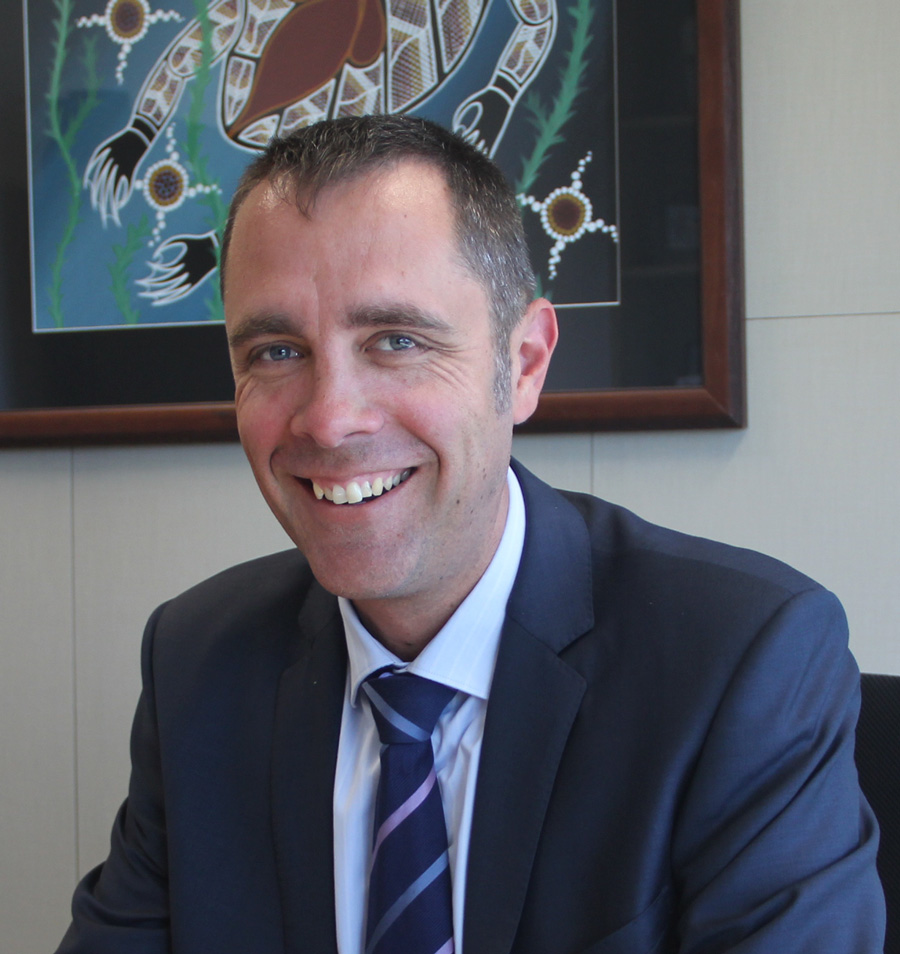Interview
David Brown
Chief Executive, Department for Correctional Services, South Australia
JT: The Department for Correctional Services’ Strategic Plan 2018-22 addresses three main themes: Offender Management and Rehabilitation; Staff, Productivity and Performance; and, Innovation, Leadership and Engagement. (1)
Could you please explain the key objectives in each of those priorities and major achievements achieved under their scope?
DB: Firstly, our goal as an agency is to be an active partner in the South Australian criminal justice sector. We work with our partners to deliver smart justice initiatives across the State to contribute to safer communities and public protection by reducing recidivism.
One of the things that we recognize, here, in South Australia, and it’s a common trend and experience across the Australian and New Zealand jurisdictions, and I know it’s a challenge in a lot of Western democracies, is the growing reliance on the use of the custodial system to respond to offending. We’ve seen very substantial growth in the prison population over the last decade, and that growth is projected to continue.
So, the pillar “Offender Management and Rehabilitation” is vital; it is the services and programs we offer in custody that are likely to improve the inmates’ successful reintegration and return to the community. In doing so, we are focused on delivering an efficient and effective custodial service that creates a safe and secure environment.
Another area critical to our success is building a diverse and multidisciplinary workforce across our correctional system.
The prison population in South Australia has grown by 50% in the last ten years, and the rate of incarceration per 100,000 adults has increased by 30%.
This means a real drain on the state budget, and so our initiatives and strategies have been designed to put downward pressure on that growth and to ensure that we are maximizing discretionary spend to the rehabilitation efforts in the custodial environment.
Moreover, we have also invested in alternatives to custody and community-based services and programs to better support people when they’re released from custody.
JT: In the last three and a half years, the Department for Correctional Services (DCS) has been committed to a program aimed at reducing recidivism by 10%.
What exactly is this program? What measures have been taken by the DCS under this program, and with what results?
DB: Back in 2016, our minister set the agency a target to reduce reoffending by 10% by 2020. The final measure of our success with this goal comes two years after the end of the financial year because in Australia that is the standard measure for recidivism (whether or not someone returned with a new court order two years after release). We’ve implemented a range of measures specifically targeting the achievement of that objective.
Some of the things that we’ve done that have had a very positive impact included working with our parliament to introduce legislative reform around the use of home detention as a sentencing option. And we substantially expanded the number of prisoners who now serve their sentence in the home.
It’s an order with quite rigorous compliance, but it also has a quite tailored package of reintegration and rehabilitation support that’s wrapped around the person who’s serving their sentence in the home. We would have saved 250 beds on any given day in the prison system through the delivery of that program.
Another proof that this program has been very successful is that only 16% of participants breach their orders, which means that we’re selecting the right people to engage in the orders. In addition, they’re very much less likely to return to custody – slightly less than 20% comparing with groups that were re-offending at a rate of about 35%. In terms of the economic benefit, it’s delivering estimated cost offsets of $57 million.
We also have a very targeted focus for our rehabilitation programs; we deliver quite intensive criminogenic programming targeting general offending, violent offending, sexual offending, and domestic and family violence offending. Program durations run from about nine to twelve months, and we have more than doubled our capacity to deliver those programs as part of the “10 by 20 Initiative”.
We wanted to ensure that high-risk offenders had the opportunity to engage in rehabilitation closer to their parole eligibility date and to deliver opportunities for them to apply for parole successfully. In South Australia, if you can’t demonstrate to the Parole Board that you’ve done something during your time in custody to reduce the likelihood of you re-offending, then you won’t get parole. Those investments have also seen us put downward pressure on the prison population growth.
Moreover, we have a partnership with a community organization specialising in employment and employment support for release offenders.
The program is called “Work Ready, Release Ready”, where moderate to high-risk offenders who engaged in a therapeutic pathway whilst in custody are given the opportunity for intensive employment and case management support twelve months post-release. This program has also seen very positive benefits in terms of slowing the rate of return to custody.
We have a very targeted focus for our rehabilitation programs; we deliver quite intensive criminogenic programming targeting general offending, violent offending, sexual offending, and domestic and family violence offending.

Besides the need to reduce the recidivism rate, what other challenges does the Department for Correctional Services face and how are you addressing them?
DB: Apart from the competition for finite resources from a budget perspective, I think the biggest challenge we face is ageing infrastructure. A lot of our prison network is quite an old infrastructure, and we have facilities that are very expensive to operate and maintain and were never designed with the objective of rehabilitation in mind.
That’s a real challenge for the agency, but we’ve worked to secure funding to build new infrastructure and to modernize our existing network of facilities with a focus on delivering built environments that support rehabilitation and the specific needs of the different cohorts of people in custody.
Another critical challenge for us is the over-representation of Aboriginal South Australians in the criminal justice system. Despite representing about 2% of the State population, they represent 25% of our prison population. It’s a real social justice issue, and we’ve been working very hard to deliver specific initiatives around working with Aboriginal people.
Also, the importance of diversity in the workforce: our key focus has also been to be an employer of choice for Aboriginal South Australians and build the representation of Aboriginal people in our workforce across all multidisciplinary teams.
Another challenge is the growing proportion of remand prisoners. Today, 45% of people in prison in South Australia are not serving a sentence. That cohort is challenging to manage and to engage in rehabilitation because they are still going through the criminal justice process.
One of the initiatives we introduced in the last five years has been constructing and commissioning an accommodation support facility run by one of our NGOs to divert people to a Supervised Bail Support Program rather than have them remanded in custody.
Moreover, we have an intensive bail supervision program trying to give the court alternatives to incarcerating someone on remand by using electronic monitoring and supervision by community corrections officers. That order has been quite successful as well.

Our initiatives and strategies have been designed to put downward pressure on the prison population growth and to ensure that we are maximizing discretionary spend to the rehabilitation efforts (…)
What else can you tell us about the evolution of alternatives to custody in South Australia and how your Department has contributed to the strengthening of community corrections?
DB: All of the evidence shows that a well-designed community-based order will deliver better outcomes in terms of reduced recidivism than the best-designed order in a custodial environment.
Our focus in alternatives to custody initiatives has been designing orders and designing reintegration and rehabilitation support services around those orders that deliver recidivism results.
Our learning in the last years has been that we must stop seeing community corrections as a low-cost alternative to the custodial program, and we must see it as a program that needs to be invested in and needs to be enhanced.
If we do that, we’ll get better outcomes. The early evidence from our perspective is that it is working and building confidence in authorities, like the Parole Board or the sentencing authorities in the courts, that there are viable alternatives to keeping a person in a prison environment.
A final point I’ll make is that we’ve tried to focus on a suitability assessment by professional staff for someone’s likelihood of success on a community-based order.
Our home detention program is comprised of both sentences handed down by the court and releases under the Correctional Services Act. Our team’s overarching objective is to assess the offender’s suitability for the home detention order and their likelihood of success.
Another priority is to determine the offender’s reintegration and rehabilitation needs. With for video calls. these assessments, our service providers can tailor the support package to those needs. Our evaluation has shown that you’ll get a better outcome when you focus on suitability rather than hard eligibility criteria.
JT: We know that, at the end of 2019, the South Australian government has approved a $15 million funding for a new offender management system (OMS).
How much progress has been made in implementing the new OMS, and how will it support DCS strategic commitments?
DB: We’re making very good progress, we’re in the market at the moment, and we’re hoping to finalize a contract by the end of this calendar year. Our current information systems are neither offender-centric nor intuitive, so it is a crucial plank in our digital transformation to provide a better platform for our staff across the system, both in custodial and community corrections.
The new OMS will enable real-time information on the people that our staff are working with and they’re supervising and to better inform decision-makers about risks and needs when working with offenders.
We’re very much focused on trying to land a COTS solution, so we wait with interest to see how the shortlisted vendors respond to the invitation to supply, which is the next stage.

JT: The Covid-19 pandemic has brought great challenges to correctional services worldwide.
Given the restrictions resulting from the pandemic crisis, what kind of measures have been implemented in South Australia?
DB: Like everywhere around the world, COVID-19 has consumed a lot of effort for the last twelve months. We’ve been very fortunate in Australia for not having an impact as significant as what was felt in other parts of the world. Our focus has been contributing to keeping the curve flat and keeping COVID-19 out of our prisons from day one.
Thankfully, we’ve achieved good results on both fronts: we’ve had no confirmed positive COVID-19 cases in a South Australian prison. As an agency, 60 to 70% of our non-prison staff worked from home at some stage during the response to the pandemic, so we had to implement working from home arrangements rapidly. We stopped a lot of access to our prisons for nonessential staff at the peak, impacting program delivery and education and vocational training.
We have implemented virtual supervision and virtual reporting arrangements in community corrections, so we deployed mobile phones and devices for video calls.
Thankfully, I think what’s stood out for us here in both the prison environment and the community is how well the offenders have responded to the pandemic and the changes in supervision. We cancelled all domestic visits to our prisons for several months. That made us roll out virtual visits for prisoners overnight, which is a fantastic initiative that is long overdue.
If there’s one positive thing we can take away from COVID is the impact of virtual visits: we’re doing thousands of virtual visits now, and even that we’re nearly back to normal with face-to-face visits, we continue to offer virtual visits to prisoners and their families.
For many offenders, virtual visits have been the first time they’ve seen their loved ones for a very long time.

Thankfully, we already had a very high level of video appearances for our courts in South Australia, especially for our magistrate’s court, our lower-level court. COVID did not have a massive impact on that. And we have, in recent years, worked with lawyers to try and improve the use of virtual meetings with lawyers for offenders as well, but we had to ramp that up even further during the pandemic.
We had done a fair bit of work on telehealth because 60% of our prisoners live in regional locations, and the pandemic required telemedicine to increase.
Some rehabilitation services stopped for some time, but then we introduced video and IVL and telephone to keep those going. We’ve been operating near normal rehabilitation programs since about July last year.
One of the things we found with the cancellation of domestic visits is that it did inhibit the introduction of contraband and illicit substances to our facilities.
And one of the initiatives of our rehabilitation services were to redirect staff that would typically be in prison delivering programs to doing telephone drug and alcohol services (short interventions), and prisoners were able to use the unit telephones to call. Now that’s embedded in our business model. We have a telephone hotline for prisoners to use if they’re experiencing withdrawal symptoms.
Moreover, they can use this hotline to reach out and get some help in terms of the next steps in their rehabilitation journey. That service has been very beneficial for our remand prisoners in particular.
Moreover, in response to COVID-19, we introduced universal testing of all new admissions to prison, and we tried to hold prisoners in a place of arrival for 14 days before we moved them onto another facility. We’ve put a range of contingencies in place, and in April 2021 we saw vaccination programs roll out across our prisons.
(1) Department for Correctional Services South Australia. (2018). Strategic Plan 2018-22.
David Brown
Chief Executive, Department for Correctional Services, South Australia
David Brown started his career as a correctional officer in Queensland. He joined the Department for Correctional Services of South Australia as Executive Director of Custodial Services in 2009 and was appointed Chief Executive in September 2012. Before joining the agency, he worked for a multi-national company, in security, care and justice, where he was responsible for leading immigration detention services across Australia. Mr Brown is a member of the Australia and New Zealand Corrective Services Administrators Council.


